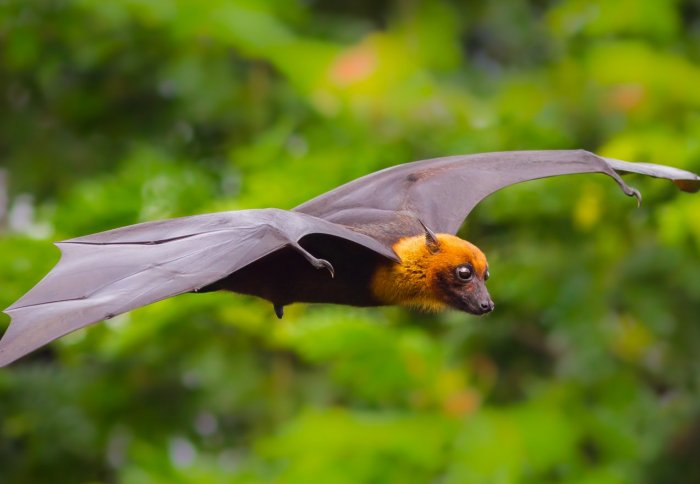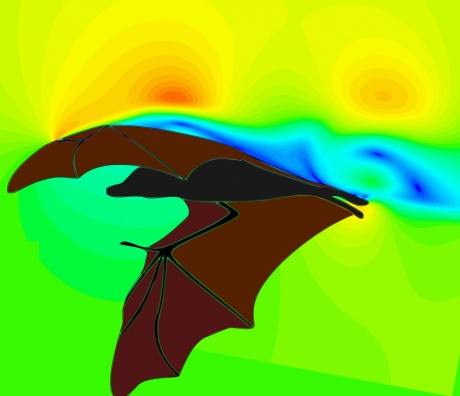
Prototype wing technology inspired by bats

Scientists have developed prototype bat wings that could be used in the next generation of unmanned micro air vehicles (MAVs).
MAVs are increasingly being used in a wide variety of civilian applications such as surveying remote and dangerous areas. However, one of the current drawbacks with this technology is that designers have to choose between fixed-wings, which enable long range flight, or rotary-wings, which enable high manoeuvrability.
Now a team of researchers from Imperial College London and the University of Southampton have developed bat-inspired wings that are made from a polymer membrane and artificial muscles, which means they can be flexible in their configuration. The team say the advantage of this is that it may enable MAVs to be both manoeuvrable and also able to fly over longer distances, making running them and their production more economical.

The team modelled air flowing over a bat-inspired wings
Similar to bats, the prototype wings can change their shape in response to different forces they experience in the air, such as turbulence. The wings incorporate polymers that are activated when an electric current runs through them. This makes the wings stiffen and relax in response, which helps them to contort to the environment they are flying through. This technology uses no mechanical parts, making the wings easier for engineers to maintain.
The bat wings have been developed through a combination of computational modelling research at Imperial and hands-on experimental work at Southampton.
An emerging trend among MAV developers such as this team is to draw inspiration from the natural world for their designs. By mimicking nature, engineers believe they can create better flight performance, improved controllability and increased efficiencies.

Dr Rafael Palacios
Dr Rafael Palacios, from the Department of Aeronautics at Imperial, said: “Nature is a great source of inspiration for us when it comes to making improvements to MAVs. A bat’s ability to expand and compress its wing structure in order to deal with the changing nature of the environment is a particularly useful feature to mimic. The prototype wing we’ve developed could enable a MAV to constantly adapt to their environment in real-time. This ability to reconfigure would also allow multiple missions to be carried out using the same MAV, instead of us having to develop a totally new craft every time it needs to do a new type of task.”
The next step for the team is to incorporate the prototype wings into typical MAV designs. They predict the technology will be deployed in real-world scenarios in five years.
The Imperial research is funded by the Engineering and Physical Sciences Research Council and the U.S. Air Force Office for Scientific Research.
Supporters

Article text (excluding photos or graphics) available under an Attribution-NonCommercial-ShareAlike Creative Commons license.
Photos and graphics subject to third party copyright used with permission or © Imperial College London.
Reporter
Colin Smith
Communications and Public Affairs

Contact details
Email: press.office@imperial.ac.uk
Show all stories by this author




Leave a comment
Your comment may be published, displaying your name as you provide it, unless you request otherwise. Your contact details will never be published.